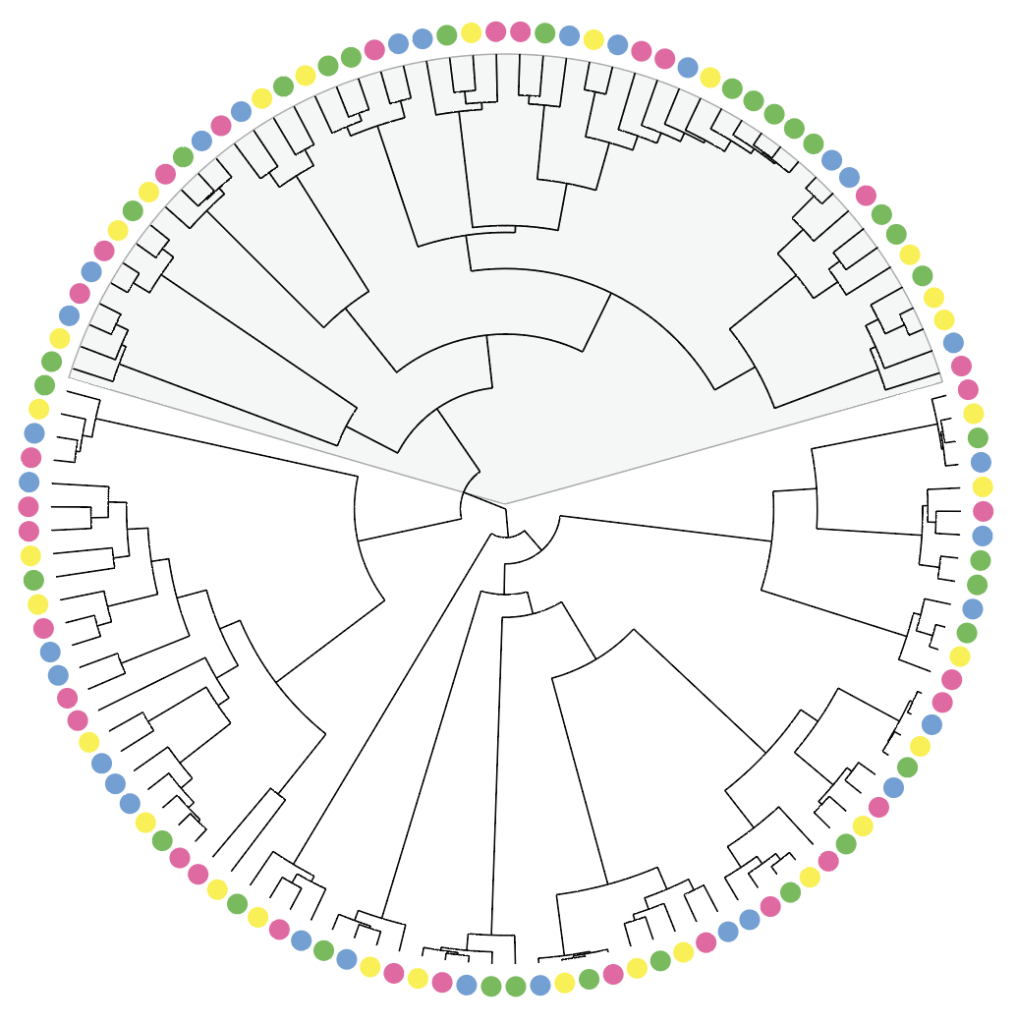When a gene acquires advantageous new functions that are favored by evolution (positive selection), it leaves detectable signatures in that gene’s DNA sequence. We are combining a broad suite of genomic analyses and experiments—comparing herbivorous insect lineages and their non-herbivorous relatives—to uncover these signatures of adaptation across the genome. By building a catalog of genes and functions that evolved rapidly and adaptively during the transition to herbivory, we aim to reveal new insights into the biochemical and physiological strategies insects use to thrive on plant diets.
As evolutionary biologists, we are broadly motivated by understanding the process of transitions to new diets: what is the contribution of phenotypic plasticity, co-option, and novelty to shifts in diet? And do individual herbivore lineages evolve independent solutions to the challenges of feeding on plants, or do they converge independently on the same solutions? But these answers have practical applications as well. The same genes and traits that allow herbivores to thrive could be particularly effective and novel targets for controlling agricultural pests.
Our findings so far point to plant chemistry as one of the major factors shaping evolutionary transitions to herbivory: insect genes and gene families that interact with compounds in plant leaves evolve exceptionally quickly during this process. Stay tuned as we expand the known catalog of genes involved in transitions to herbivory, dig into the how their functions enabled these transitions in the first place, and probe how their functions have evolved to allow insects to thrive on plant diets.

Above: A phylogeny of Glutathione S-Transferase genes in an herbivorous Scaptomyza species (S. flava, green) and non-herbivorous relatives in the genus Drosophila (blue, yellow, and pink). We found that genes within the GST gene family, as well as other detoxification and chemosensory gene families that mediate the interaction between insects and the chemicals in their diet and environment, were gained and lost at an accelerated pace when herbivory evolved. For more details, see our work here: https://doi.org/10.1093/g3journal/jkad133